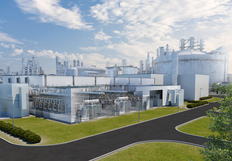- The 54-MW PEM electrolyzer will produce 8,000 metric tons of hydrogen annually.
- The project will reduce CO2 emissions by 72,000 metric tons per year.
- The German government and Rhineland-Palatinate are funding the project with €124.3 million.
- The plant is scheduled to begin operations in 2025.

Project Overview
BASF is advancing its Hy4Chem-EI project with Siemens Energy to build a 54-megawatt proton exchange membrane (PEM) electrolyzer at its Ludwigshafen site. The electrolyzer will produce up to 8,000 metric tons of hydrogen annually, significantly reducing CO2 emissions by up to 72,000 metric tons per year.
Funding and Support
The project has secured up to €124.3 million in funding from the German Federal Ministry for Economic Affairs and Climate Action and the State of Rhineland-Palatinate. Of this, up to €37.3 million will be financed by the government of Rhineland-Palatinate.
Operational Timeline
The water electrolysis plant is scheduled to begin operations in 2025. The hydrogen produced will be used primarily as a raw material for BASF's products with a reduced carbon footprint and to support hydrogen mobility in the Rhine-Neckar Metropolitan Region.
Technological Impact
Hydrogen is a crucial raw material for chemical value chains. Currently, BASF uses around 250,000 metric tons of hydrogen per year, produced mainly through steam reforming, which generates high CO2 emissions. The new electrolyzer will help transition to low-emission hydrogen production, aligning with BASF's goal of achieving net zero CO2 emissions by 2050.
Future Prospects
BASF is committed to exploring various technologies for low-emission hydrogen production, including water electrolysis and methane pyrolysis. The Ludwigshafen site will play a key role in testing and developing these technologies to replace fossil fuels with renewable electricity.

